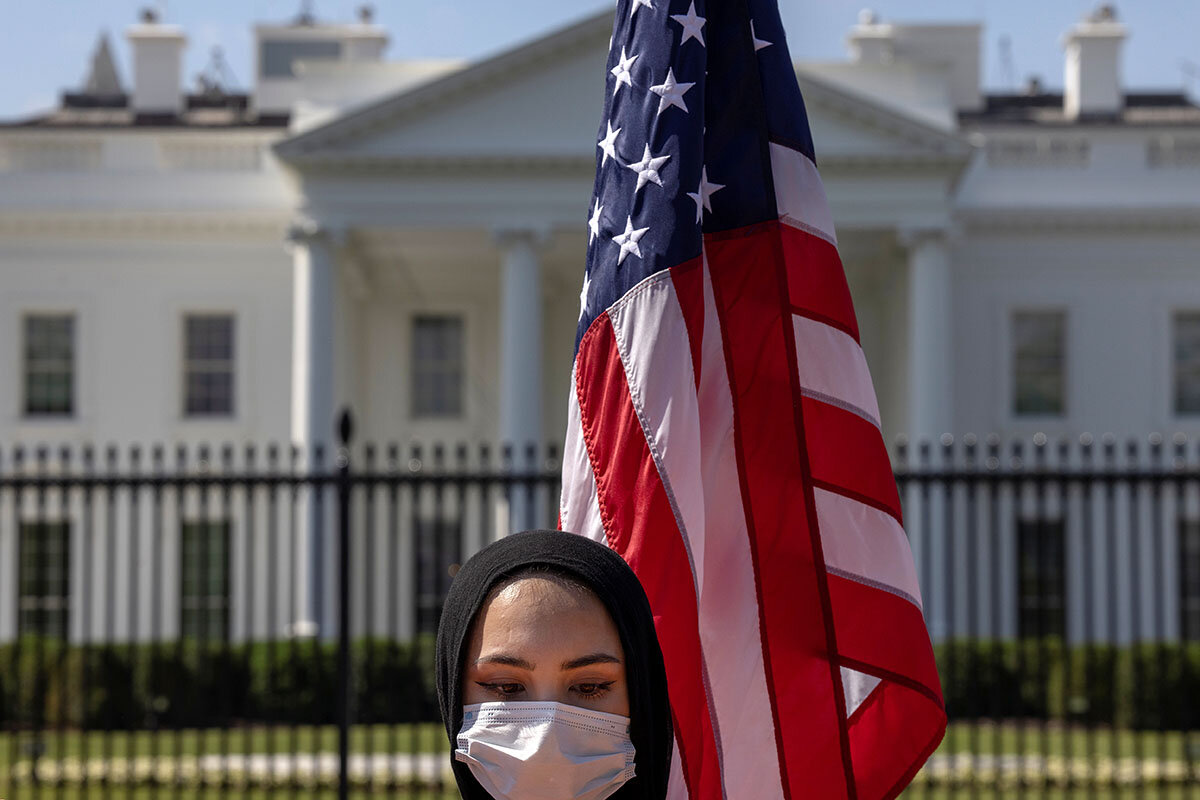Can Xi Jinping make China look ‘credible, lovable and respectable’?
Loading...
| London
China’s inexorable advance on the world stage appears to be hitting some awkward speed bumps.
The Asian giant’s overall direction of travel isn’t in doubt. China has the world’s second-largest economy after the United States and is catching up; Xi Jinping, its most powerful leader since Mao Zedong, remains firmly wedded to a vision of authoritarian rule; and Beijing is pushing ahead with its ambitions for greater military strength and political clout abroad.
But China’s growing power is making a lot of people elsewhere in the world increasingly nervous, and Mr. Xi signaled last week that he understands that. At a Politburo meeting, he urged a shift in the tone of Beijing’s messaging abroad in order to convey an image of China as “credible, lovable and respectable.”
Why We Wrote This
China’s rise seems inexorable. But new questions about COVID-19’s origins, and closer scrutiny of Beijing’s repressive style and military assertiveness, have heightened global wariness.
The speed bumps are making that look like a tall order.
First, the coronavirus. Though the pandemic originated in China, Beijing initially earned international kudos for the way it brought COVID-19 under control at home and launched an early economic rebound, while the world’s leading democracies – notably the United States – reacted far less effectively. But the near-gloating tone of China’s criticism of other countries’ response has undermined its position.
And this month, the question of whether the virus may have escaped from a research lab in Wuhan has raised its head again. The idea was once a widely dismissed conspiracy theory that former President Donald Trump weaponized for political purposes. It is now taken seriously enough in Washington that President Joe Biden has ordered a formal intelligence review.
That doesn’t mean the hypothesis will prove true: Many scientists still believe it’s more likely that the pandemic resulted from animal-to-human transmission of COVID-19. Yet the review has drawn new attention to the Chinese authorities’ ambiguity about the origins of the virus, and revived international criticism of its habitual secrecy.
Such criticism is spreading, too, with regard to China’s oppression of the Uyghur Muslims in Xinjiang, in the northwest of the country, and its crackdown on pro-democracy activists in Hong Kong. Enter speed bump number two: greater international uneasiness over China’s domestic autocracy and its growing assertiveness overseas.
The arrival of a new administration in Washington has been critical to this trend. President Biden has made China and the Asia-Pacific region the main focus of his foreign policy, a focus evident even this week as he set off for a series of summits with allies in Europe and a meeting with Russian President Vladimir Putin.
In an op-ed piece in The Washington Post before leaving, he framed the trip as part of a wider struggle between democracy and autocracy, stressing the need to “confront the harmful activities” not just of Russia, but of China too.
In talks with European leaders, Mr. Biden said he would “focus on ensuring that market democracies, not China or anyone else, write the 21st-century rules around trade and technology.”
And he pledged to lead U.S. allies in a challenge to China’s international influence, promising that “the world’s major democracies will be offering a high-standard alternative to China for upgrading physical, digital and health infrastructure” around the world.
Mr. Biden has already begun redirecting military spending with a view to shoring up defense preparedness with allies in the Asia Pacific region. That is designed to deter a further Chinese buildup in disputed areas of the South China Sea and, above all, any military move against Taiwan, the island state Mr. Xi has vowed to reunify with the mainland.
None of this is likely to have an immediate effect on China. A new infrastructure drive by the world’s major democracies, even if it succeeds, will take time. The new seriousness of purpose in Washington, however, was underscored this week with rare bipartisan backing in the U.S. Senate for a $250 billion package to promote high-tech innovation and production in the U.S. Its explicit aim: to fend off competition from, and dependence on, China.
China’s economic weight, and its importance as a trade partner and consumer market, still lend it political and diplomatic influence. That’s true even in some of the European countries whose leaders Mr. Biden is meeting this week, such as Germany and Italy.
It is even more relevant for Asian allies. Australia and New Zealand, for instance, depend on China as a key export market. Australia has been caught in a punishing trade war with Beijing since publicly calling earlier this year for an independent inquiry into the origins of the pandemic, and sharply criticizing China’s crackdown in Xinjiang and Hong Kong.
New Zealand has so far escaped Chinese trade retaliation by treading more softly. Though critical of the treatment of the Uyghurs, it has avoided using the term “genocide” and declined to join the U.S., Britain, the European Union, and Canada in imposing sanctions.
Yet last month, New Zealand Prime Minister Jacinda Ardern remarked that differences with China were getting “harder to reconcile.”
And when she welcomed Australia’s Scott Morrison for their first face-to-face talks since the pandemic, the two leaders issued a joint statement voicing “grave concerns about the human rights situation in Xinjiang” and the limits on “the rights and freedoms of the people of Hong Kong.”
Prime Minister Morrison cautioned “those far from here who would seek to divide us.” He couldn’t have been clearer about who he meant if he’d said it in Chinese.







